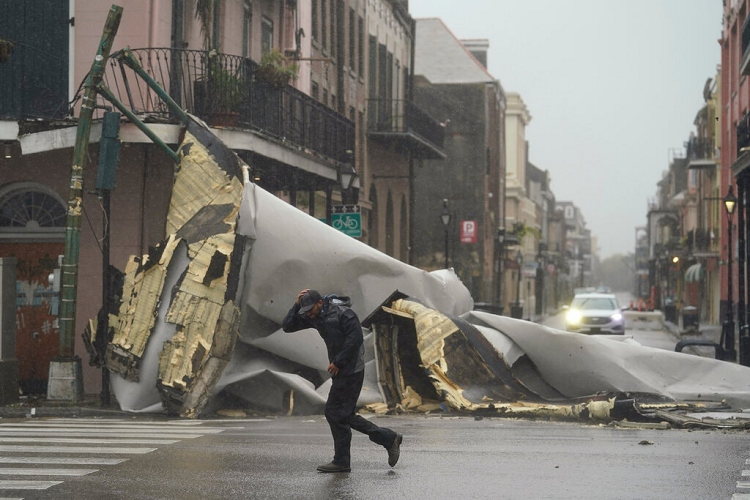THREE YEARS ago, on August 29, Hurricane Ida arrived in New Orleans. Dutch people saved hundreds, possibly thousands, of lives that Sunday. An exaggeration? Exactly 16 years earlier, Hurricane Katrina had visited the city, leaving 1,800 dead. Ida, according to meteorologists, was “the worst in Louisiana’s history.” Yet, the destruction was largely limited to wind damage. New levees shielded the city from a catastrophic 2005-like flooding.
This was compliments of the Amsterdam engineers of Arcadis, a company that has been in the water business since 1888. New Orleans hired them immediately after Katrina. Every local government of coastal American towns knows the story of the Dutch. How they, after a 1953 flood disaster, developed a Delta Plan that American engineers now call a world wonder. An extra salient detail for New Orleans was that at the time an equal number of deaths had been mourned in Holland, 1800.
NEW ORLEANS is a mini Netherlands. It lies at the mouth of America’s largest river. The Mississippi passes the city at a walking pace, 3 mph, pushing 600,000 cubic feet of water into the sea every second. When winds are ferocious, the Gulf of Mexico pushes back just as hard. Then the combined water of river, sea and rain rises, and because the land around New Orleans is as flat as a pancake, say as flat as the Netherlands, only a rock-solid barrier system will help.
They didn’t have that in Louisiana until only recently. There were levees, but they were poorly maintained. During Katrina, one after the other broke. The Dutch of Arcadis were hired to change that once and for all.
AND SO there are now dikes in and around the city, even taller than in Holland because category 4 or 5 hurricanes never come to the North Sea. In New Orleans on days like Sunday, the water rises much faster and much higher. But dikes alone are not sufficient. The water must also be able to escape. So Arcadis built the world’s biggest pumping station, as part of the West Closure Complex. Pumps with a combined power of 60,000 horsepower, together with concrete barrier walls and three major storm surge barriers, ensure that the water is kept away from the city. It is routed to pre-prepared locations so that homes and businesses remain dry.
It is a piece of craftsmanship that is unrivaled elsewhere. No one else in the world knows how to defend against the threat of water as well as the Dutch do. That is why, after Katrina, New York, Houston, Norfolk, Boston, Charleston, Miami, Tampa, Houston, Galveston, Los Angeles, Sacramento, San Francisco, New Haven, Bridgeport, Seattle, Memphis, Chicago and Minneapolis have also started working with Dutch engineers, builders, dredgers and the Dutch Ministry of Water Management.
New Orleans had every reason to nervously await Ida’s arrival. But the Dutch Touch did a perfect job.




